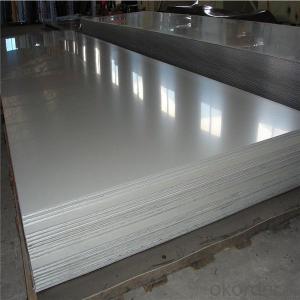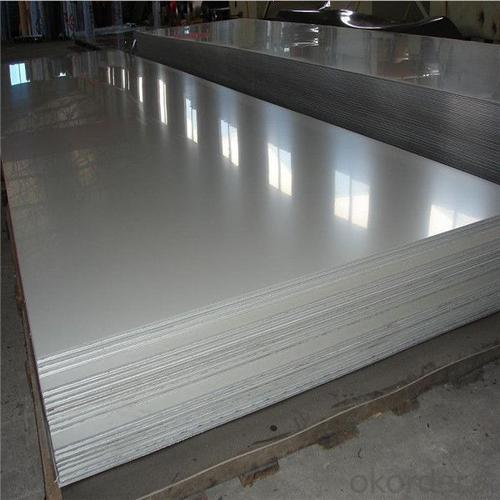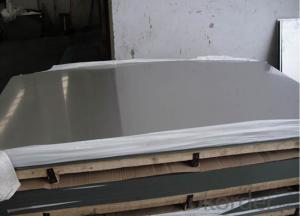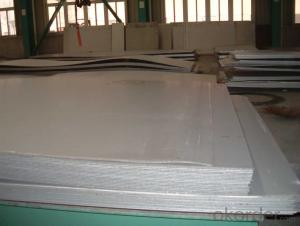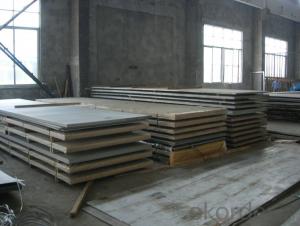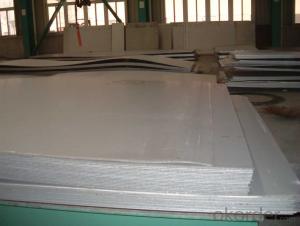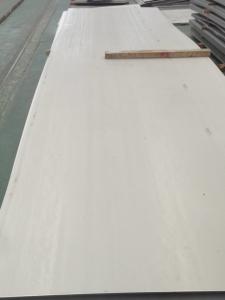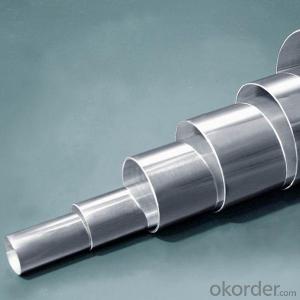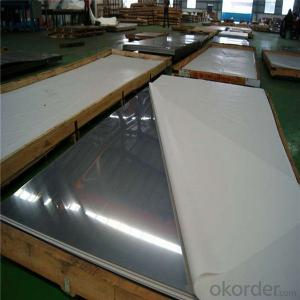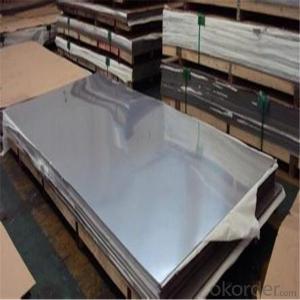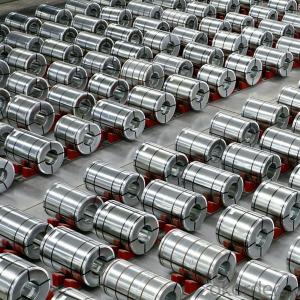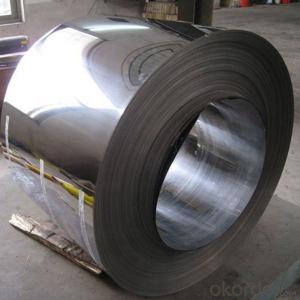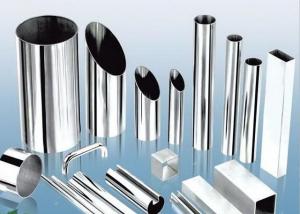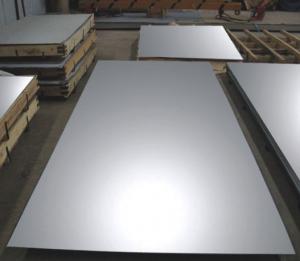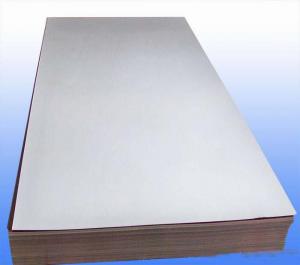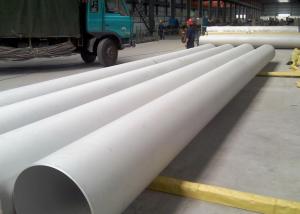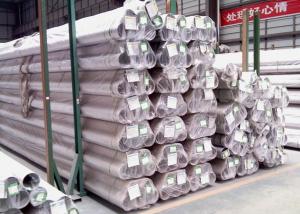Stainless Steel Sheet 304 2mm hot rolled
- Loading Port:
- Shanghai
- Payment Terms:
- TT OR LC
- Min Order Qty:
- 2 m.t.
- Supply Capability:
- 2000 m.t./month
OKorder Service Pledge
OKorder Financial Service
You Might Also Like
Specification
Product Description
High Quality Cold Rolled Stainless Steel Plate,Cold Rolled Stainless Steel Plate,Stainless Steel Sheet,
Specifications
We offer superior quality stainless steel sheets, which have earned us wide admiration in the world market.
| Material | Size | Thickness | Specification | Manufacturer |
| Stainless Steel | 1000 mm x 2000 mm, 1220 mm x 2440 mm (4' x 8'), 1220 mm x 4880 mm, 1250 mm x 2500 mm, 1500 mm x 3000 To 6300 mm, 2000 mm x 2000 To 10000 mm, | 0.1 mm To 150 mm | A-240 | TISCO,LISCO. |
Grades:
304, 304L, 316, 316L, 317L, 321, 316 Ti, 309, 310, 904L, 410, 420, 430, 431, 202, etc.
Sheet Finishing:
2B, 2D, HR, CR, BA (No. 8), No. 4, Satin (Met with PVC Coated)
Sheet & Plate In Form Of: Coils, foils, shim sheet, perforated sheet, chequered plate, strip, flats, blank (circle), ring (flange), etc.
Value Added Service:
Cladding, heat treatment.
Annealed & pickling, polish & buffing.
Rolling, cutting, bending, forging, minor fabrication, etc.
Test Certificate:
Manufacturer Test Certificate
Laboratory Test Certificate from Govt. Approved Lab.
Under Third Party Inspection with Excise Gate Pass to avail Modvat benefit.
Specialize:
Shim sheet, perforated sheet (round, square & oblong hole) & as per your drawing
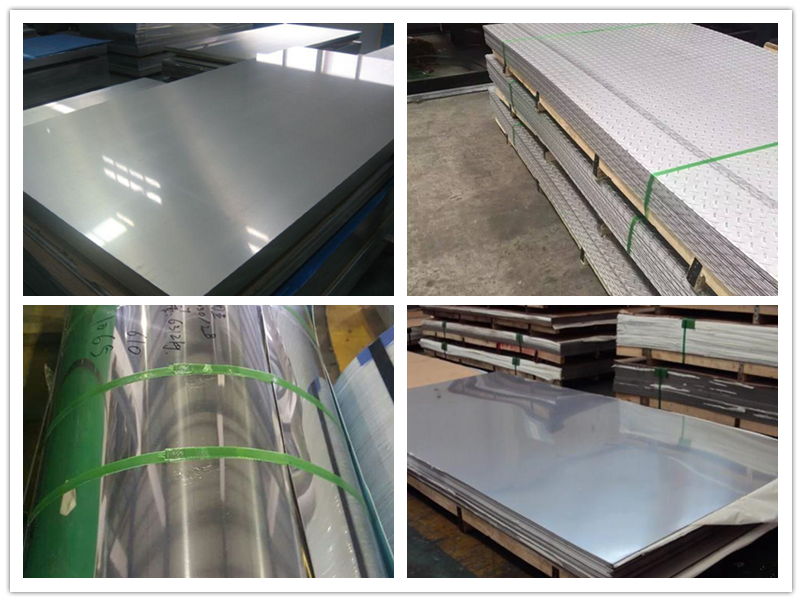
Packaging & Shipping
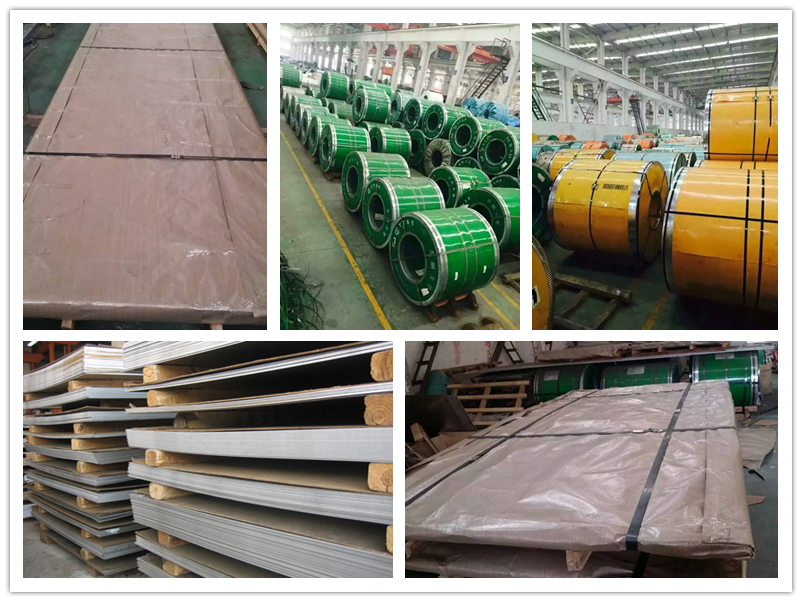
Application

- Q: How do you measure the thickness of stainless steel sheets?
- There are multiple methods available for measuring the thickness of stainless steel sheets. One commonly used approach involves the utilization of a caliper, which is a precision measuring tool. By placing the jaws of the caliper on both sides of the sheet and tightening them until contact is made, the thickness can be directly measured. The reading on the caliper will provide an indication of the sheet's thickness. Alternatively, a more accurate method for measuring very thin sheets is through the use of a micrometer, which functions similarly to a caliper. By employing a spindle and anvil, the micrometer can provide precise measurements of thickness. This method is frequently employed in industries where accuracy is of utmost importance, such as manufacturing and engineering. In the absence of a caliper or micrometer, a simple ruler or tape measure can be utilized. Although this method may not provide the same level of accuracy as specialized tools, it can still offer a rough estimate of the thickness. By measuring the height of the sheet, assuming it is uniformly thick, one can infer the sheet's thickness. It is worth noting that the appropriate measurement tool depends on the thickness of the stainless steel sheet. Micrometers and calipers are best suited for measuring thinner sheets, while thicker sheets may require more specialized instruments like ultrasonic thickness gauges. In conclusion, the thickness of stainless steel sheets can be measured using various methods, including calipers, micrometers, rulers, or tape measures. The choice of tool depends on the desired level of accuracy and the thickness of the sheet being measured.
- Q: Are stainless steel sheets suitable for welding or fabrication?
- Certainly, stainless steel sheets prove to be a fitting choice when it comes to welding and fabrication purposes. The weldability of stainless steel is truly exceptional, enabling it to readily merge through an array of welding techniques like TIG (Tungsten Inert Gas) or MIG (Metal Inert Gas) welding. Moreover, its formability is commendable, granting it the ability to be effortlessly molded and fabricated into diverse structures or components. Furthermore, stainless steel sheets exhibit remarkable strength and resistance against corrosion, thereby winning favor in industries encompassing construction, automotive, and manufacturing. All in all, stainless steel sheets establish themselves as a versatile and dependable material for applications pertaining to welding and fabrication.
- Q: What are the advantages of using stainless steel sheets?
- Using stainless steel sheets in various applications offers several benefits. First and foremost, stainless steel is renowned for its outstanding resistance to corrosion. It is highly effective in preventing rust and stains, making it an ideal option for environments where moisture and corrosive substances are present. This exceptional durability ensures that stainless steel sheets maintain their aesthetic appeal and structural integrity over time. Furthermore, stainless steel is exceptionally strong and durable. It possesses a high tensile strength, enabling it to withstand heavy loads and resist deformation. This makes stainless steel sheets perfect for applications that require robustness, such as construction, automotive, and industrial projects. Additionally, stainless steel is sanitary and easy to clean. Its non-porous surface prevents the growth of bacteria and other microorganisms, making it a popular choice for food processing equipment, medical tools, and healthcare facilities. Moreover, stainless steel sheets are simple to maintain, as they can be easily wiped clean or sterilized without causing any damage to the material. Moreover, stainless steel sheets offer both versatility and aesthetic appeal. They feature a sleek and modern appearance that can enhance the visual appeal of architectural designs, interior decorations, and kitchen appliances. With a variety of finishes available, including brushed, mirror, or textured, stainless steel sheets can be customized to suit specific design preferences. Lastly, stainless steel is an environmentally friendly material. It is 100% recyclable, meaning it can be reused and repurposed without any loss in quality or performance. This makes stainless steel sheets a sustainable choice, reducing the necessity for new raw materials and minimizing waste. In conclusion, the benefits of using stainless steel sheets include exceptional corrosion resistance, strength and durability, hygienic properties, aesthetic appeal, and environmental sustainability. These characteristics make stainless steel sheets a versatile and dependable choice for a wide range of applications.
- Q: What is the price range of stainless steel sheets?
- The price range of stainless steel sheets can vary depending on various factors such as the grade of stainless steel, the thickness of the sheet, the size, and any additional finishes or coatings that may be applied. Generally, the price range for stainless steel sheets can start from around $20 per sheet for smaller sizes and standard grades, and can go up to several hundred dollars per sheet for larger sizes, higher grades, and specialized finishes. It is important to note that prices can also vary based on the supplier and market conditions, so it is advisable to compare prices from different sources to get the best deal.
- Q: Can stainless steel sheets be used for elevator mirrors or panels?
- Stainless steel sheets are indeed suitable for elevator mirrors or panels. Elevator interiors often opt for stainless steel due to its enduring quality, stylish look, and ability to resist corrosion and scratches. By utilizing stainless steel sheets, elevator mirrors or panels achieve a contemporary and sophisticated appearance, while also ensuring effortless cleanliness and upkeep. Moreover, stainless steel is a versatile material that can be personalized with diverse finishes like polished, brushed, or textured, amplifying the allure of the elevator interior.
- Q: Are stainless steel sheets available in different patterns?
- Yes, stainless steel sheets are available in different patterns.
- Q: How do you calculate the weight of a stainless steel sheet?
- In order to determine the weight of a stainless steel sheet, one must possess knowledge of its dimensions (length, width, and thickness) as well as the specific gravity of stainless steel. Firstly, the volume of the stainless steel sheet can be ascertained by multiplying the length, width, and thickness. This will yield the volume in cubic units. Subsequently, the volume is to be multiplied by the specific gravity of stainless steel, which typically stands at around 7.93 g/cm³ (grams per cubic centimeter). This will provide the weight of the stainless steel sheet in grams. To convert the weight into a different unit, such as kilograms or pounds, the weight in grams should be divided by the appropriate conversion factor. For instance, to convert grams into kilograms, divide by 1000. To convert grams into pounds, divide by 453.59237. It is crucial to bear in mind that this calculation furnishes an approximation of the weight, as variations in the specific gravity of stainless steel may occur based on the precise alloy and composition of the sheet.
- Q: What is the difference between cold rolled and hot rolled stainless steel sheets?
- The main difference between cold rolled and hot rolled stainless steel sheets lies in the manufacturing process. Cold rolled stainless steel sheets are produced by rolling the steel at a lower temperature, which results in a smoother and more polished finish. Hot rolled stainless steel sheets, on the other hand, are produced by rolling the steel at a higher temperature, which makes them less smooth and less polished. Additionally, hot rolled sheets tend to have a thicker gauge compared to cold rolled sheets.
- Q: Is there a big price difference between the SUS304 stainless steel plate and the drawing plate?
- The ordinary 304 stainless steel plate and the processed 304 drawing stainless steel plate, the price difference is not very big. You can consult the specific price.
- Q: Can stainless steel sheets be used for stairs and railings?
- Stairs and railings can indeed utilize stainless steel sheets. This remarkably resilient and adaptable material frequently finds its place in architectural and interior design endeavors. With its corrosion resistance, stainless steel proves suitable for outdoor settings and environments with elevated humidity or chemical exposure. The malleability of stainless steel sheets allows for their fabrication into diverse forms and dimensions, rendering them perfect for crafting stairs and railings with an elegant and contemporary appearance. Furthermore, stainless steel boasts effortless cleanliness and maintenance, thus making it a pragmatic selection for high-traffic areas or public spaces.
Send your message to us
Stainless Steel Sheet 304 2mm hot rolled
- Loading Port:
- Shanghai
- Payment Terms:
- TT OR LC
- Min Order Qty:
- 2 m.t.
- Supply Capability:
- 2000 m.t./month
OKorder Service Pledge
OKorder Financial Service
Similar products
Hot products
Hot Searches
Related keywords
